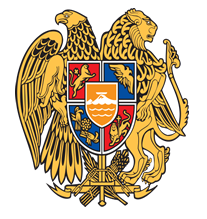Armenia: Government
Key Figures
- Chief of State:
- President Vahagn Khachaturyan
- Head of Government:
- Prime Minister Nikol Pashinyan
Overview
- Government Name:
- Republic of Armenia
- Constitution:
- Adopted: 1995; Established Armenia as a democratic, sovereign, social, and constitutional state. Vests the power to its citizens in regard to elections.
- Government Type:
- Parliamentary Democracy

Index of Economic Freedom
Country Risk Rating
Government Branches
| Main Powers | Election Process | Election Cycle 1 | |
|---|---|---|---|
| Executive | The president serves as the head of state, strives to uphold the constitution and to ensure the regular functioning of the legislative, executive, and judicial powers and guarantees independence, territorial integrity, and the security of the republic. The prime minister is required by the constitution to oversee the government's regular activities and coordinate the work of the ministers. |
The president is elected by absolute majority through a two-round system. The prime minister is appointed by the president with the approval of parliament. |
5 years |
| Judicial | The court of cassation and constitutional court (although separate from other two branches of government) enforce the laws on a local and nationwide basis. |
Court of cassation judges are nominated by the judicial council. |
Mandatory retirement age of 65 |
| Legislative | The national assembly is responsible for the creation of laws. |
The national assembly has 90 members elected through a closed-list proportional representation system and 41 members elected by plurality vote in single-member constituencies. |
5 years |
Regional Trade Blocs
International Organization Participation [2]
Environmental Agreements [3]
Tax Information [2]
- Tax Authority:
- Ministry of Finance and State Revenue Committee
- Tax Name:
- VAT
Sources:
- ElectionGuide http://www.electionguide.org/
- EY, http://www.ey.com
- CIA World Factbook, https://www.cia.gov/the-world-factbook/
- U.S. Bilateral Relations Fact Sheets http://www.state.gov/r/pa/ei/bgn/


